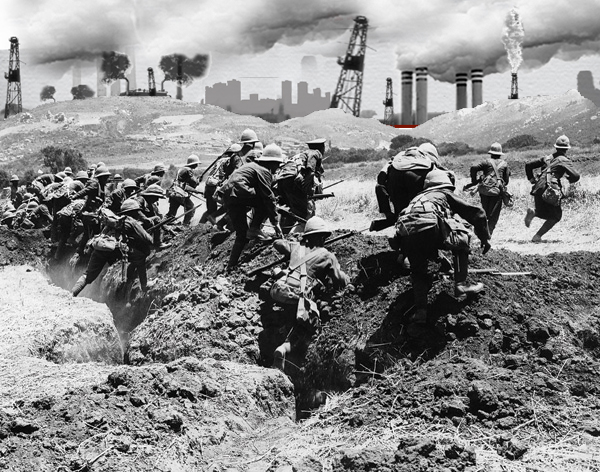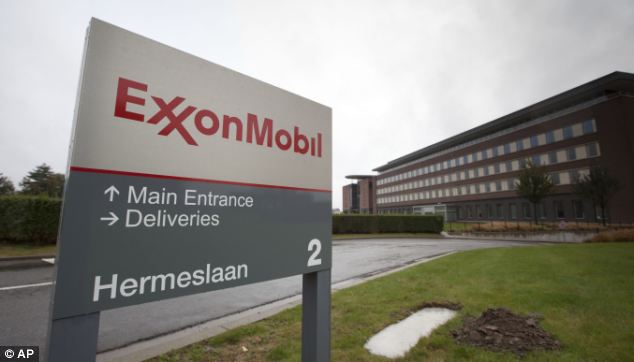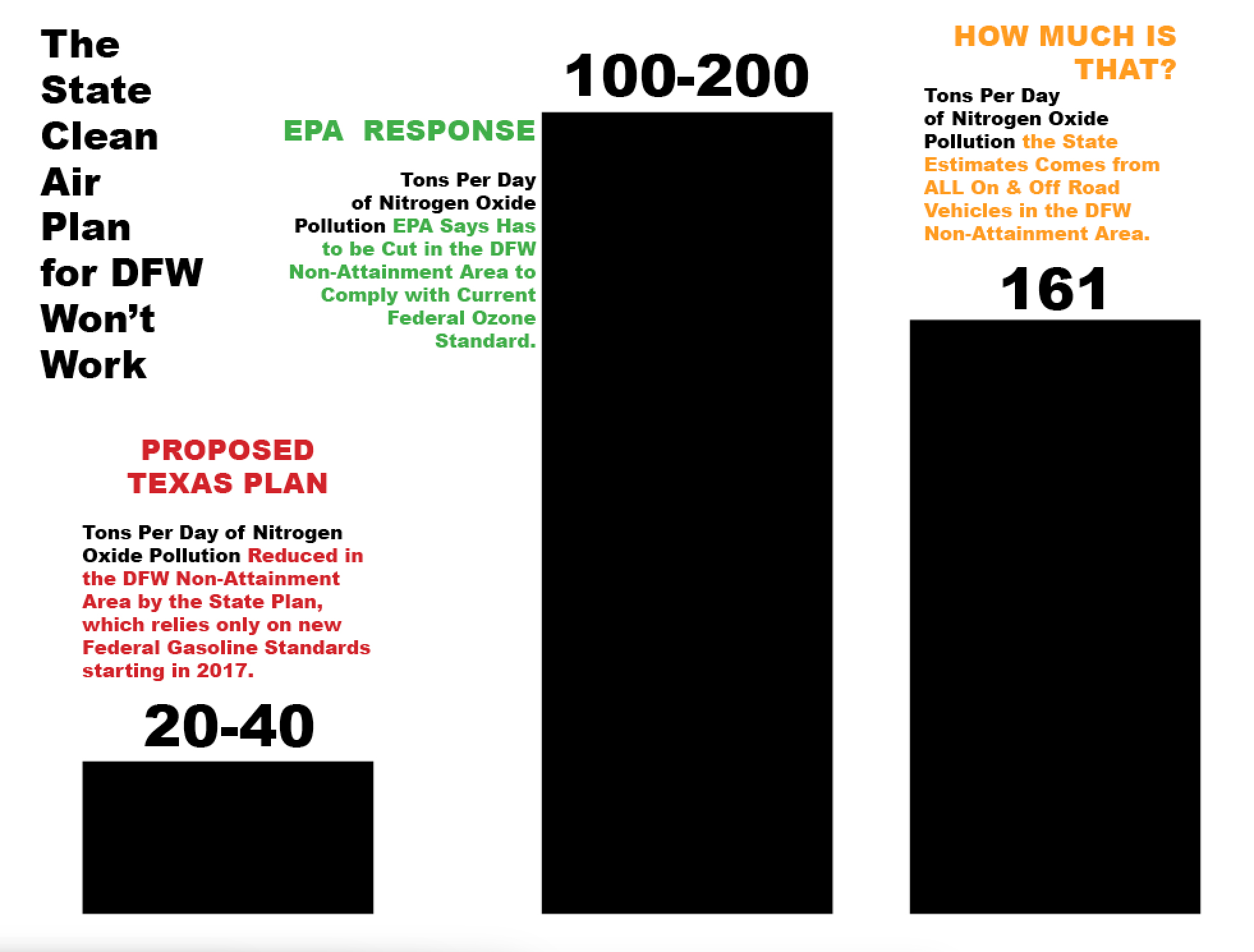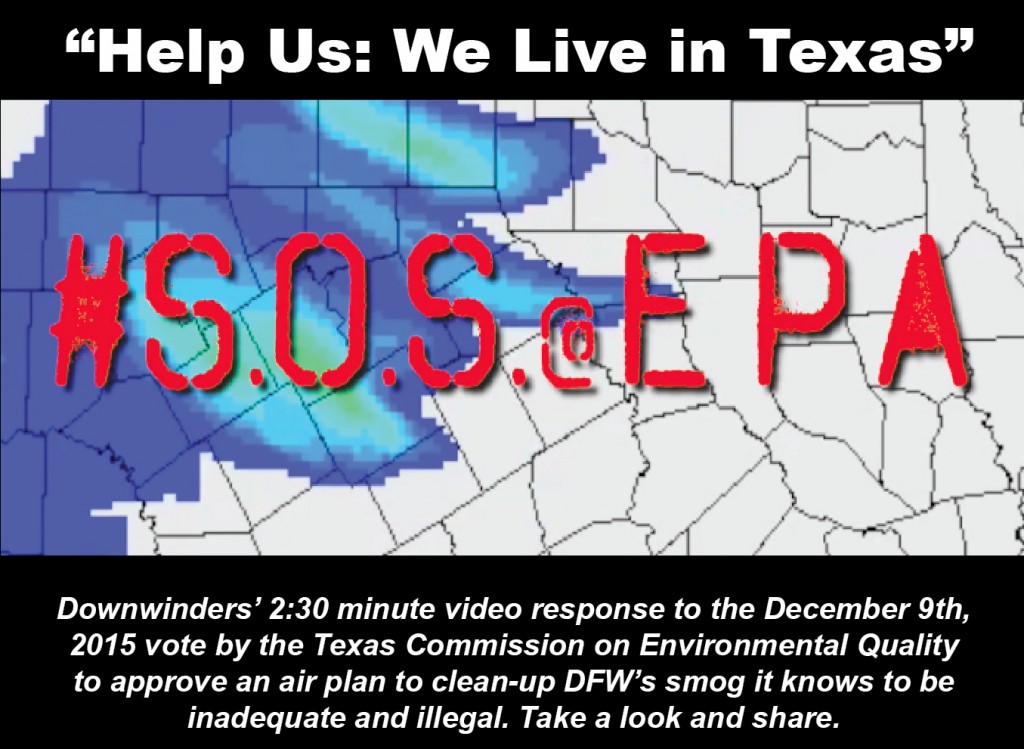Climate Change
A Guide to Downwinders & Everything Else @ Earth Day Texas 2017
 Earth Day Texas 2017 at Fair Park this weekend offers you plenty of chances to catch up with Downwinders and see us in action. It also offers you more information and discussions and multimedia experiences than anyone person could possibly get around to in 72 hours, no matter how committed.
Earth Day Texas 2017 at Fair Park this weekend offers you plenty of chances to catch up with Downwinders and see us in action. It also offers you more information and discussions and multimedia experiences than anyone person could possibly get around to in 72 hours, no matter how committed.
So here’s not only where to find us, but some other interesting things that overlap with our program work, past events, or just seem cool.
Beginning this coming Friday you can come by and see one of our new EPA-calibrated ozone monitors up close and personal at our booth in Centennial Hall – 5010. Downwinders’ Wise County Ozone Project is looking for folks to help us pull-off one of the largest, and most important citizen science projects ever attempted in North Texas. Stop by and see the little piece of equipment that’s not afraid to go where the state fears to tread.
On Friday morning you can catch Downwinders at Risk Director Jim Schermbeck participate with Railroad Commissioner Ryan Sitton and others in a UTA/CLEAR-sponsored roundtable on Fracking in Texas 10:50-11:40 am inside the Automotive Building. Since a community forum on the Bluestone Injection Well on Lake Arlington will have happened in Fort Worth the night before, that topic is sure to still be on the front burner during this discussion. This ro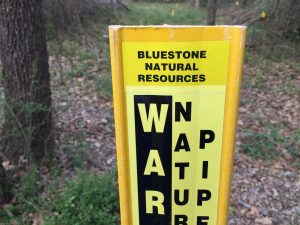 undtable is just one of a long list of events being sponsored as part of first annual Responsible Shale Energy Extraction Symposium happening Friday and Saturday.
undtable is just one of a long list of events being sponsored as part of first annual Responsible Shale Energy Extraction Symposium happening Friday and Saturday.
Also on Friday morning, continuing on into the later afternoon is a running series of discussions and presentations on climate change in the Automotive Building featuring a 90 minute discussion on carbon pricing starting at 12:15 pm, followed by Susan Eisenhower at 1:30 to 2 pm and former General Wesley Clark from 2:30 to 3:30 pm.
From 2:30 to 3:30 pm on Friday at the Grand Place, theres a roundtable on “Youth and the Environment.”
Saturday morning beginning at 10 am the March for Science will snake its way from Downtown Dallas to Fair Park with an ETA of 2 pm, where GreenSource DFW is sponsoring a climate rally at the the Band Shell.
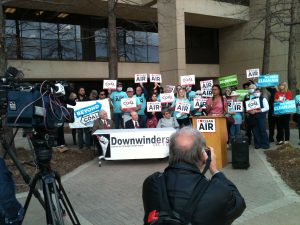 On Saturday, from 4:45 to 5:45 pm Downwinders’ Schermbeck facilitates a discussion about Dallas Air Quality between people with lots of initials after their names, including Dr. Robert Haley, nationally-recognized UT Southwest epidemiologist and coal plant fighter, Dr. David Lary, the guru of high tech air monitoring at UTD, and Dr. Natalie Johnson, a Professor of Environmental and Occupational Health at Texas A&M.
On Saturday, from 4:45 to 5:45 pm Downwinders’ Schermbeck facilitates a discussion about Dallas Air Quality between people with lots of initials after their names, including Dr. Robert Haley, nationally-recognized UT Southwest epidemiologist and coal plant fighter, Dr. David Lary, the guru of high tech air monitoring at UTD, and Dr. Natalie Johnson, a Professor of Environmental and Occupational Health at Texas A&M.
Saturday morning from 10:15 to 11:15 offers you a chance to see RRC Commissioner Sitton’s road show, with a 30 minute spiel on the oil and gas industry up front, and a Q&A session afterwards.
Across the Esplanade in Centennial Hall from 10 to 11 am there’ll be a debate between Log Cabin Republicans and Stonewall Democrats.
From 12 to 12;30 on Saturday pm Tech Tech prof and Climate Change Celeb Dr. Katherine Hayhoe will speak at Centennial Hall.
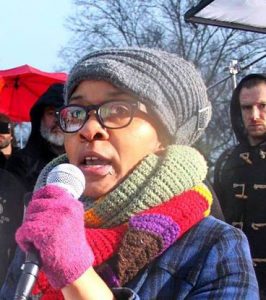 Saturday night at 7:30 pm in the lovely Fair Park Music Hall is a screening of “Bigger Than Water,” the definitive film on the Flint Water Scandal to date featuring Flint Democracy Defense League organizer Nayyirah Shariff, who was Downwinder’s special guest in January for our Root and Branch Revue conference for activists.
Saturday night at 7:30 pm in the lovely Fair Park Music Hall is a screening of “Bigger Than Water,” the definitive film on the Flint Water Scandal to date featuring Flint Democracy Defense League organizer Nayyirah Shariff, who was Downwinder’s special guest in January for our Root and Branch Revue conference for activists.
Sunday morning beginning at 11 am sees what’s bound to be a popular presentation on Tiny Houses in the Grand Place, while a workshop on Protecting Praries takes place at the same time in the Tower Building.
From 3:30 to 4:30 pm on Sunday there’s a roundtable on “Trinity Tribulations” in the Automotive Building and the EDTx Earth Pitch competition wraps up with the Academic and Non-profit divisions from 12:30 to 3 pm.
Exhausted? That’s not even skimming the surface. Whatever you decide to prioritize, allow yourself some time to just wander around.
Next Week: Two Events Put DFW Greens on the Front Lines of Change…Again
GET OUT OF YOUR RUT AND JOIN THE FIGHT!
MONDAY, MAY 23rd
9am Dallas City Hall
1500 Marilla Downtown Dallas
Room 6ES (6th Floor, South)
Dallas City Council's Quality of Life Committee Considers/Votes
on the DFW AIR QUALITY RESOLUTION
WEDNESDAY, MAY 25th
7:30 am – 10 am
Morton Meyerson Symphony Center
2301 Flora Downtown Dallas
EXXON – MOBIL SHAREHOLDERS MEETING
MONDAY, the 23rd
Dallas could follow Dallas County and be the second North Texas local government to say they want the EPA to reject the state's air plan for DFW.
Think about that. In "Red" Texas, local governments are asking the EPA to intervene and give them cleaner air because of their own State's failure to do so.
Just like our Green Cement Campaign, and our Dallas Drilling Ordinance, an EPA- written air plan for DFW would be setting an important national precedent from right here in the Belly of the Beast.
 Sandy Greyson is Chair of this Committee, which includes:
Sandy Greyson is Chair of this Committee, which includes:
Tiffini Young
district7@dallascityhall.com
Mark Clayton
mark.clayton@dallascityhall.com
Philip Kingston
Philip.Kingston@dallascityhall.com
Adam McGough
adam.mcgough@dallascityhall.com
Rickey Callahan
rick.callahan@dallascityhall.com
Please email these council members and tell them you support Ms. Greyson's air quality resolution.
This is a Committee hearing. There is no public comment allowed, but public shows of support are encouraged and the council members may ask questions from experts in the audience.
We'll have plenty of DFW CAN BREATHE CLEAN AIR lapel pins. Feel free to wear one and/or show your support through other means.
If this Committee votes in favor of the resolution, it'll probably go to the full council for a vote in June.
Show up Monday and let the City Council know you care about clean air.
WEDNESDAY, MAY 25th
The national spotlight will be on Dallas again on Wednesday as Exxon-Mobil, our own hometown corporate Poster Child for climate change denial, will be holding its annual shareholders meeting in downtown Dallas.
Because of new revelations the company secretly knew about the dangers of climate change in the late 1970's, but continued to publicly deny the phenomenon, this year's annual meeting in Dallas is especially important. More than 500,000 people across the United States have called on the Department of Justice and State Attorneys General to look into Exxon's cover-up. So far, Massachusetts, U.S. Virgin Islands, New York, and California have launched official investigations.
350.org, the Sierra Club and other national groups have been leading the call to show up at the Exxon-Mobil meeting and make sure the company is held accountable for its past and current behavior.
Most of us never get to go to international conferences and protests like Paris last year, or even ones in DC or New York. But next Wednesday the 25th, the epic global fight against self-destruction comes to your own doorstep.
What are you going to do?
Don't let your activism end once you go off-line. Turn your "like" into an action.
Show up Wednesday morning bright and early and represent.
They'll be coffee and food. They'll be banners. They'll be media.
But we need you to be there too.
Help us show the rest of the world that we can do our part.
Help us keep the pressure on.
Help us win.
WEDNESDAY, MAY 25th 7:30 am – 10 am
Morton Meyerson Symphony Center 2301 Flora Downtown Dallas
Bring the East Texas Coal Plants into DFW’s Smog “Non-Attainment Area” and See How Long They Last……
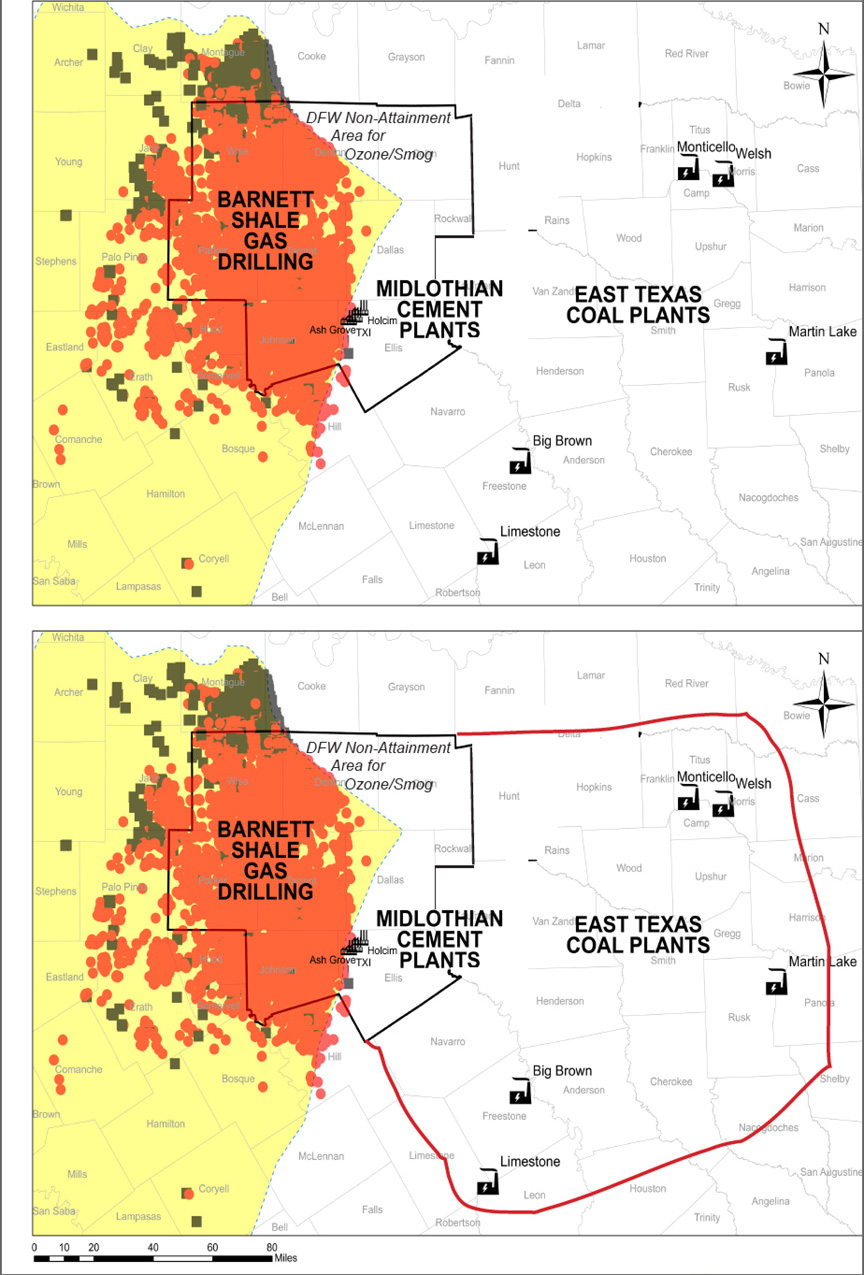 Want the Coal Plants to Face the Kind of Regulation
Want the Coal Plants to Face the Kind of Regulation
They've Been Avoiding for Decades?
Click here and send a formal comment letter demanding the coal plants
be included in the new DFW non-attainment area for smog.
Even as we're all waiting to see what EPA decides to do about the current Texas air plan for DFW under the current 75 ppb ozone standard, the regulatory process is gearing-up to administer the new 70 ppb standard.
One of the things which must be decided by the EPA are what geographical boundaries to use for the new standard when it comes to the DFW airshed and its chronic smog condition. Should they stick with the current 10-County configuration or should it be different and/or more inclusive?
The history of DFW's smog fight is a lengthy chronicle of bringing new counties into the fold despite official resistance. Originally, the DFW non-attainment area was only Tarrant, Dallas, Collin and Denton. Then Rockwall, Parker, and Johnson Counties came in because of their commuter traffic.
Downwinders had to petition the EPA to bring Ellis County and its cement industrial complex into the non-attainment area early in this century after being told repeatedly by state officials that its pollution had no impact on DFW air quality.
More recently, the state argued against the inclusion of Wise County, despite its huge inventory of oil and gas pollution, population of commuters, and more than likely, the highest ozone levels of anywhere in North Texas. EPA decided to bring it in anyway.
We're once again at a crossroads, and it could be the most significant one in a decade.
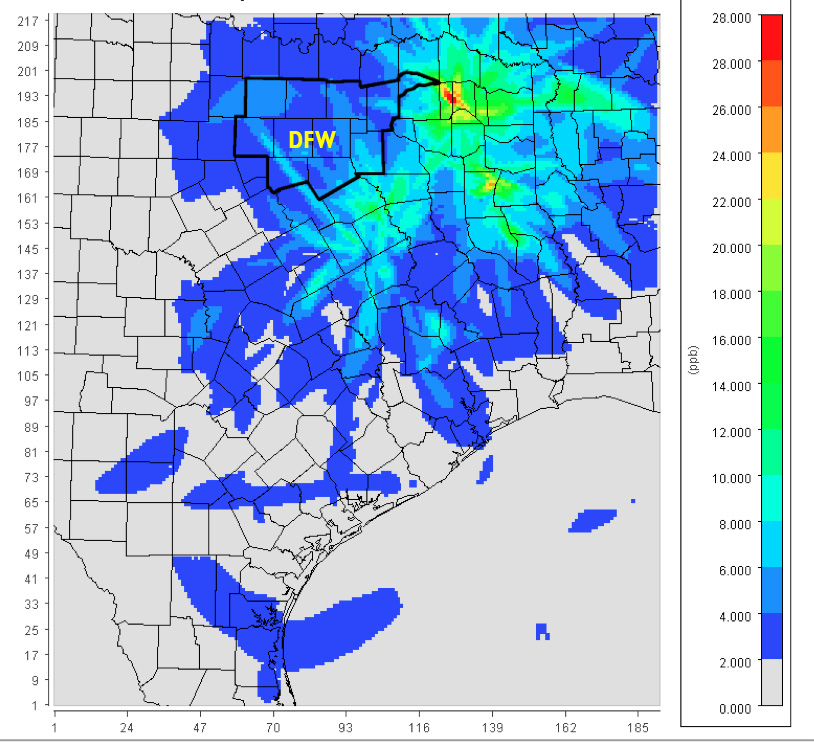 New evidence shows the huge impact the East Texas coal plants have on DFW air quality. Every scenario run by the UNT Engineering Department with the state's own DFW air computer model as part of Downwinder's Ozone Attainment Project demonstrates there's no more effective smog fighting strategy than reducing or eliminating the pollution from these coal plants.
New evidence shows the huge impact the East Texas coal plants have on DFW air quality. Every scenario run by the UNT Engineering Department with the state's own DFW air computer model as part of Downwinder's Ozone Attainment Project demonstrates there's no more effective smog fighting strategy than reducing or eliminating the pollution from these coal plants.
In fact, with a few other measures within the DFW area itself, controlling or eliminating their emissions could bring us in compliance with the 75 ppb standard, something that's not likely to happen otherwise.
Why is it so important to officially bring them into the DFW non-attainment area? Because major sources of pollution like coal plants are regulated differently inside than they are outside the area.
Right now, many DFW businesses are having to pay to operate and maintain pollution control equipment although most emit a tiny fraction of the pollution coming from the coal plants. That's because they're located in one of the ten counties in the DFW non-attainment area. They're held to a higher standard of control than their peers doing business outside those ten counties.
On the other hand, despite their large contribution to DFW's chronic ozone problem, the East Texas coal plants remain untouched by the same regulations and are not held to that higher standard. What sense does that make?
As much sense as it made to keep the cement plants out. As much sense as it made to try and exclude Wise County.
As per usual, the EPA is letting the state have first crack at defining a new DFW smog zone. The state has decided to leave the boundaries the way they are.
 Now, it's your turn to comment on that state decision, and tell Austin and the EPA – which will review the State's recommendations – what you think needs to happen.
Now, it's your turn to comment on that state decision, and tell Austin and the EPA – which will review the State's recommendations – what you think needs to happen.
The state is accepting comments on its decision until April 15th. This time, you can send your comments directly by e-mail instead of having to go through the official Texas Commission on Environmental Quality website
If you want to use our ready-to-send letter, all you have to do is CLICK HERE , sign the letter and add your own comments if you want. Then one more click and it's on it's way to Austin.
If you want to write your own comments:
EMAIL: kristin.patton@tceq.texas.gov
SNAIL MAIL: Kristin Patton, MC 206, State Implementation Plan Team, Office of Air, Texas Commission on Environmental Quality, P.O. Box 13087, Austin, Texas 78711-3087,
FAXED:(512) 239-6188.
All comments should reference "2015 Ozone NAAQS Designation Recommendations."
How to Outflank HB40 in the Barnett Shale
 Last week, the EPA made an important admission.
Last week, the EPA made an important admission.
"Methane emissions from the oil and gas industry are significantly higher than previous official estimates, according to draft revisions of the U.S. greenhouse gas emissions inventory released Monday by the Environmental Protection Agency. At 9.3 million metric tons, revised estimates of 2013 emissions are 27% percent higher than the previous tally. Over a 20-year timeframe, those emissions have the same climate impact as over 200 coal-fired power plants."
This most recent analysis jives with other studies like the one from UTA/EDF that found Barnett Shale facilities leaking up to 50% more methane than previously estimated. In reaction to the information, EPA Chief Administrator Gina McCarthy was quoted as saying "we need to do more" to cut methane pollution.
In its last year in office the Obama administration is finally grasping that natural gas isn't the climate change wunderkind its promoters claimed and last week's announcement is the tacit admission they need to do more to crack down on oil and gas.
What has that got to do with DFW in 2016?
By Spring, the Regional office of the EPA is expected to announce that it has rejected the State's clean air plan for DFW in regard to its application of "Reasonably Available Control Technology." That means the state hasn't required the application of readily-available air pollution controls for major sources the way the Clean Air Act demands. Specifically, EPA staff have cited the failure of the state to lower the emission standards for the Midlothian cement kilns to reflect more modern technology. But it's not the only area where Texas fell short. There are no new pollution requirements for any oil and gas facilities in the state's plan either.
EPA rejection of the Technology section of the state's DFW air plan would mean the EPA would begin to draft its own clean air plan for the region. An EPA-drafted plan gives local citizens concerned about the health impacts of fracking an opportunity to persuade the Agency to use the plan to crack down on smog-forming Nitrogen Oxide (NOx) and Volatile Organic Compounds (VOCs) pollution in the Barnett Shale by requiring lower emission standards on all aspects of drilling and production.
While methane isn't considered a smog pollutant, it doesn't get emitted by itself. It comes out of a stack or valve, or leaks from a pipeline combined with smog-forming VOCs. So the more you control VOC pollution, the more you control methane pollution.
In light of last week's announcement, this gives EPA an extra incentive to go after VOC emissions in DFW even though the conventional wisdom is that it's combustion-generated Nitrogen Oxide pollution that really makes DFW smog so bad.
BTW, that conventional wisdom is under attack because the worst-performing air monitoring sites in North Texas are all in the Barnett Shale and heavily influenced by pollution from oil and gas facilities – both NOX and VOCs. It's possible to imagine a strategy to get smog numbers down in DFW solely by application of oil and gas emission regulations that can impact these important monitors – which drive the entire region's fate – even if the new regs have minimal impact on monitors elsewhere.
What kind of new regulations are we talking about?
* Start with the electrification of all 650 large natural gas compressors in the 10-county area.
* Do the same thing for all drilling rigs in the same 10-county area – nothing but electric.
* Emission standards for tanks and pipelines that reflect the latest leak-detection technology.
Inclusion of new EPA “Control Technique Guidelines" which are part of Agency's new methane rules. According to the Agency's release on the the new rules, “…reduction of VOC emissions will be very beneficial in areas where ozone levels approach or exceed the National Ambient Air Quality Standards for ozone."
Under the new rules, areas like DFW that host large concentrations of gas pollution sources and are officially categorized as “non-attainment” for smog receive "an analysis of the available, cost-effective technologies for controlling VOC emissions from covered oil and gas sources."
There's one more reason EPA has an incentive to go looking for all the cuts in oil and gas pollution it can find in the 10-county DFW non-attainment area: after the cement kilns, there's no other major sources the Agency can target locally.
Because while it has the authority in a federal clean air plan to regulate all pollution sources in that 10-county DFW non-Attainment area, the EPA can't write new emission standards for the East Texas coal plants located 100 miles outside of that 10-county area – even though those coal plants have more of an impact on North Texas smog than any other source of pollution. EPA (and us) can put pressure on the state to address these dinosaurs, but it can't touch them through a DFW air plan.
EPA staff has estimated it will take a cut of 100-200 TONS PER DAY in local smog-forming Nitrogen Oxide pollution for DFW reach the current 75 parts per billion smog standard. The State's "plan" – i.e. the federal gasoline fuel changes it relies on – only represents a 20-40 tons per day cut.
Where do the other 60 -160 tons a day in cuts come from?
To give you some idea of the size of that gap, the state estimates that all on and off road vehicles in the 10-county area will emit 161 tons per day of NOx in 2018.
State-of-the-art controls on all the cement plants might give you up to 15 tons a day. Electrification of the large compressors, another 15-16 tons per day eventually. After that it gets hard to find large volumes of cuts without the coal plants. And this is why the EPA should give cuts in VOC/methane a longer look than they have before – they're concentrated in the same areas where the region's worst-performing monitors are and they represent a huge source of climate change pollution that could also be another skin on the wall in addition to lowering smog levels.
There's no question the passage of HB40 has stymied grassroots progress toward more protective regulation of fracking by municipal governments in the Barnett Shale. It's thrown what was a fairly successful local movement into disarray. To date, there doesn't appear to be any consensus about strategies to combat the effects of the legislation.
But a way to outflank some of the impacts of HB 40 coming is coming down the pike, and it offers local fracktivists an opportunity to rally round a common, achievable goal – lowering emission levels across the board in the Barnett Shale. We can overlay a larger, stricter regional template for oil and gas regulation in place of 100 separate municipal ones.
What better way to nullify the efforts of the nullifiers in Austin?
New Comments from EPA on DFW Air Plan: It Won’t Work
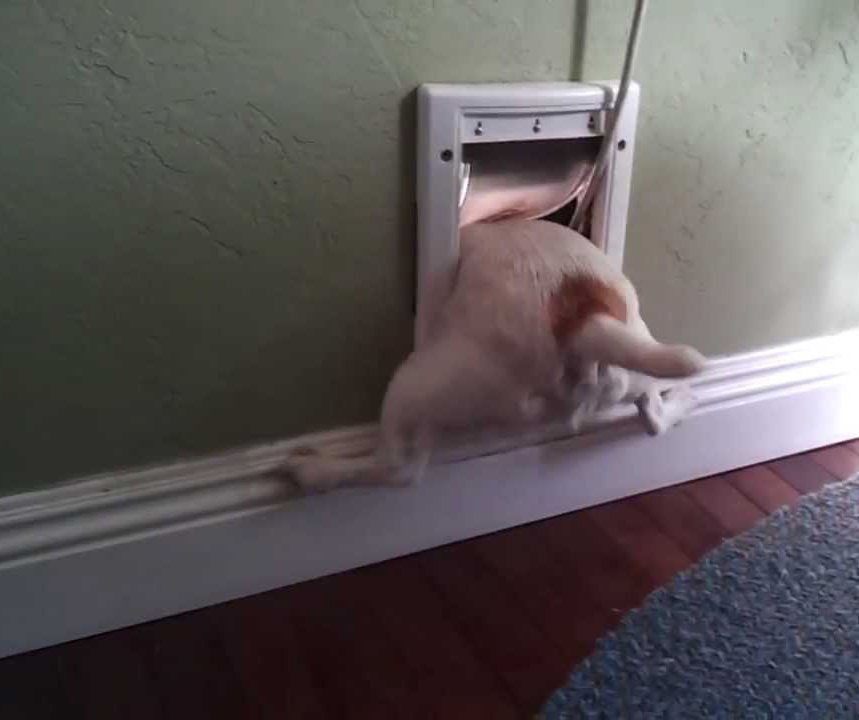 This plan won't work.
This plan won't work.
That's the simple message from the three pages of new comments Region 6 EPA staff submitted to the Texas Commission on Environmental Quality last month concerning its anti-smog plan for DFW.
That message begins with the cover letter, written by Mary Stanton, Chief of the State Implementation Plan Section for Region 6. "… additional local and regional ozone precursor emission reductions will be necessary to reach attainment by 2017."
How much in reductions? EPA estimates an additional 100-200 tons per day more in cuts of smog-forming pollution will be necessary to achieve compliance with the current 75 parts per billion ozone standard. "Without emission reductions on this scale, it is unlikely that the area will attain by the attainment date.”
To give you some idea of how large a number that is, TCEQ calculates that all gas and oil air pollution in DFW equals 78 tons per day, the Midlothian cement plants belch out over 18 tons per day, and all the power plants in the immediate DFW area, 21 tons per day. Totaled, those three sources add up to 117 tons of pollution a year.
All the cars and trucks on DFW roads are said to add up to 180 tons per day of pollution.
So the decrease in pollution EPA is saying is necessary to get down to the current ozone standard is huge.
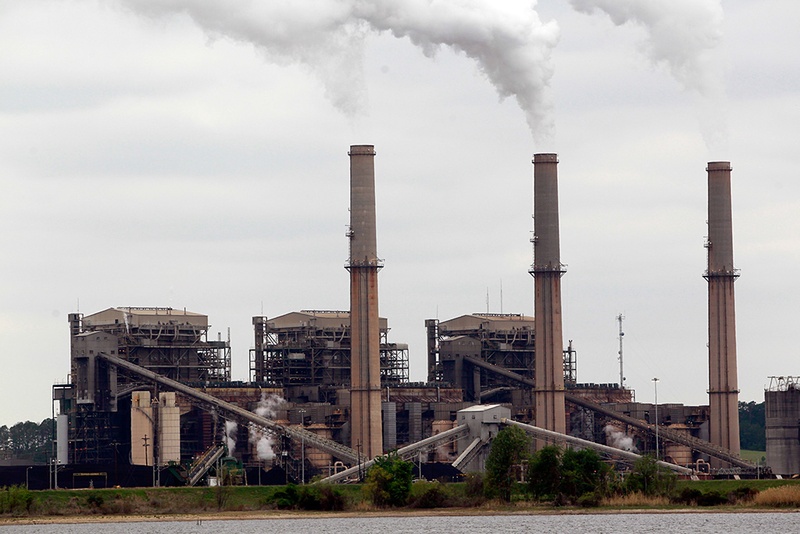
But take a look at those obsolete East Texas coal plants outside the boundaries the DFW nonattainment area. TCEQ says they account for a total of 146 tons per day. Add Selective Catalytic Reduction (SCR) which can get you up to 90% reductions in coal plant emissions, or close them down completely, add decreases from new controls on the cement kilns and oil and gas sources, and you're well on your way to amassing 200 tons a day of cuts in pollution.
Which do you think is more attractive to most DFW residents: permanently parking their cars, or putting new controls on the coal plants? Even though the coal plants harm the whole DFW airshed more than any other major source, they're not held accountable to the same regulatory requirements as sources closer to the center of the urban core, but which have less impact. Our cars must have special gasoline formulas in summer, we have to have HOV lanes, and we still go through Ozone Action Days, but the coal plants party like it's 1979. TCEQ is taking a hands-off approach to the plants and as a result the DFW region will continue to be in violation of the smog standard or huge cuts from other sources will be necessary.
TCEQ could have added new controls to the coal plants to the plan, but it chose not to. In fact, there are no new controls in the state's plan on any major sources of air pollution affecting DFW. EPA's new comments go to the heart of that choice. "Without additional emission reduction measures, we don’t see how the area will meet the standard of 75 ppb by the end of the 2017 ozone season," writes EPA staff.
EPA goes on to say TCEQ's computer modeling supporting it's do-nothing plan is "unrealistic," severely underestimating future smog levels, and delivering projections of decreases "that seem unlikely to be reached."
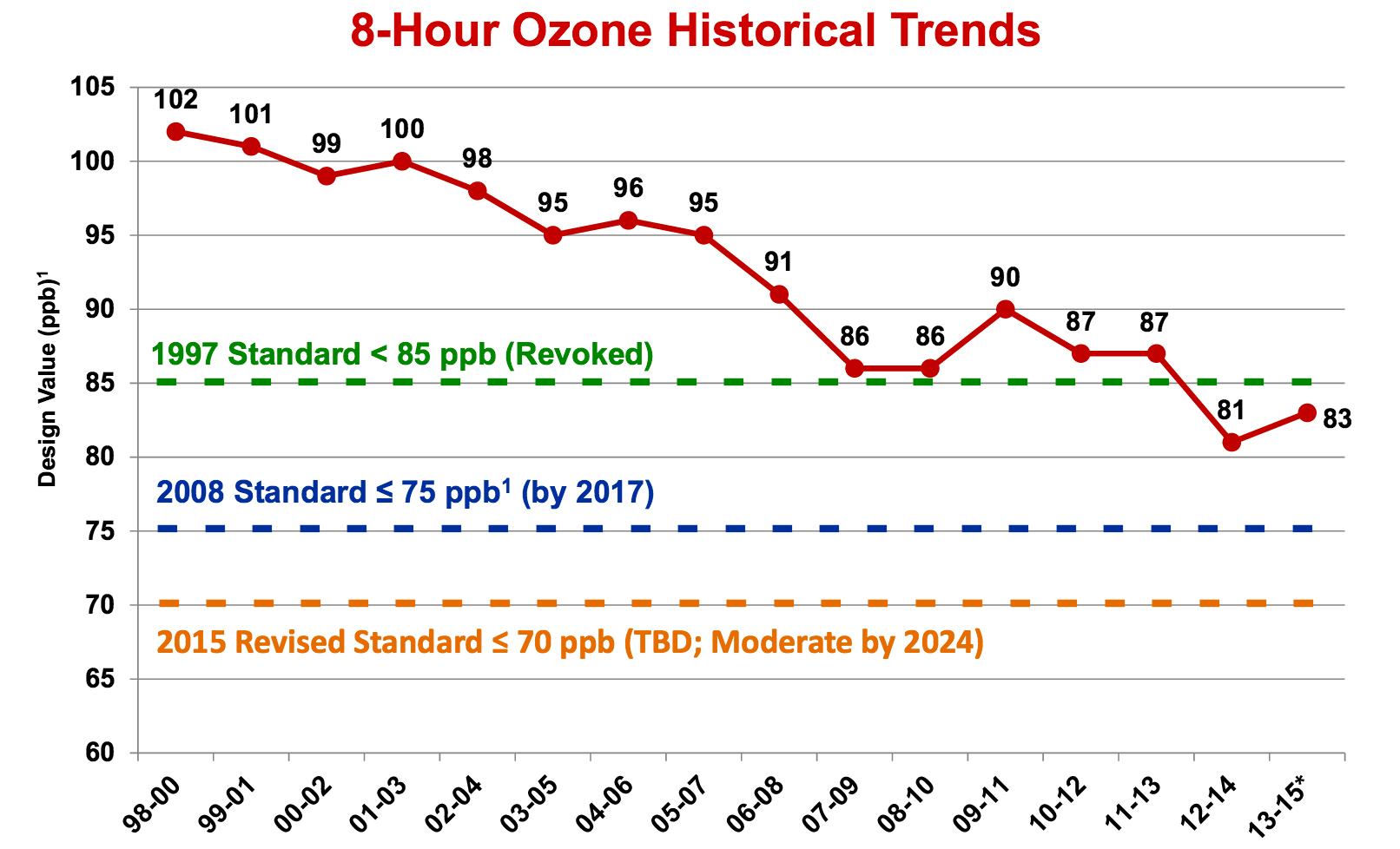 With this stance, EPA seems poised to reject this "attainment demonstration" part of the air plan as being insufficient. But it must wait to see how TCEQ responds to EPA comments about its modeling shortcomings and need for new cuts when the state officially submits its plan this July. Then, and ony then can the Agency approve or disapprove. We're going out on a limb here and predicting TCEQ won't change a thing, thus inviting EPA disapproval.
With this stance, EPA seems poised to reject this "attainment demonstration" part of the air plan as being insufficient. But it must wait to see how TCEQ responds to EPA comments about its modeling shortcomings and need for new cuts when the state officially submits its plan this July. Then, and ony then can the Agency approve or disapprove. We're going out on a limb here and predicting TCEQ won't change a thing, thus inviting EPA disapproval.
That's the pattern TCEQ has already established with its "screw you" response to the EPA's comments about the part of the plan dealing with "Reasonably Available Control Technology," or RACT, last February. This second part decides what new controls should be required of major sources of air pollution within the 10-County DFW "non-attainment" area – like the Midlothian cement plants and the thousands of oil and gas facilities checkerboarding the western half of the Metromess.
TCEQ says nothing new is required. EPA disagrees. EPA told TCEQ last year it had to do a new RACT review and lower the kiln's emission limits to account for a new generation of technology or it would have to reject the state's plan. TCEQ ignored the request, daring the EPA to disapprove. EPA seems more than willing to take them up on the offer.
And so while you're waiting for the state's computer modeling and suspect math to be rejected by EPA in July, you can probably expect to see EPA officially rejecting the RACT part of the state's plan sooner – maybe as soon as the next 60-90 days.
Despite the TCEQ going out of its way to submit an unacceptable plan to EPA, if the Agency pulls the trigger and begins a federal takeover of the DFW air plan, the Commission and the whole of Texas State Government will cry bloody murder about the usurpation of the state's authority and once again proclaim how "out of control" the EPA is on their way to filing suit.
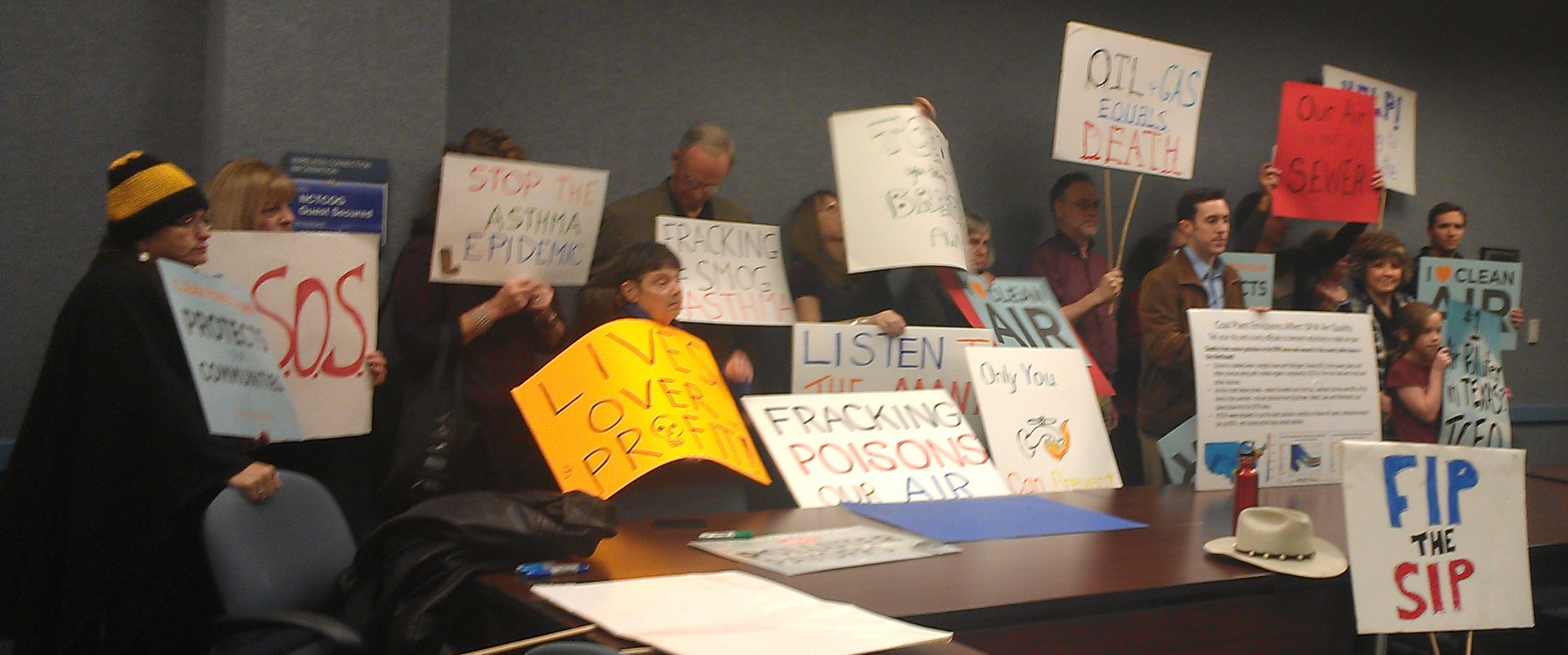 This is why the rowdy eruption of public sentiment for an EPA plan at the hearing in Arlington two weeks ago was so critical (Thank you again). It's also why we now have to be about the business of getting DFW local governments, hospitals and school districts to pass resolutions in favor of an EPA takeover. The Agency will need this kind of public support to counter all the criticism it will take from the Usual Suspects in Austin and DC. If you're interested in helping us pass one of these resolutions in your county, city, school or hospital district, please let us know at: downwindersatrisk@gmail.com
This is why the rowdy eruption of public sentiment for an EPA plan at the hearing in Arlington two weeks ago was so critical (Thank you again). It's also why we now have to be about the business of getting DFW local governments, hospitals and school districts to pass resolutions in favor of an EPA takeover. The Agency will need this kind of public support to counter all the criticism it will take from the Usual Suspects in Austin and DC. If you're interested in helping us pass one of these resolutions in your county, city, school or hospital district, please let us know at: downwindersatrisk@gmail.com
And as always, it's why you, and people you know should:
The Fastest Way to Get Big Cuts in Climate Change Pollution? A Good DFW Anti-Smog Plan.
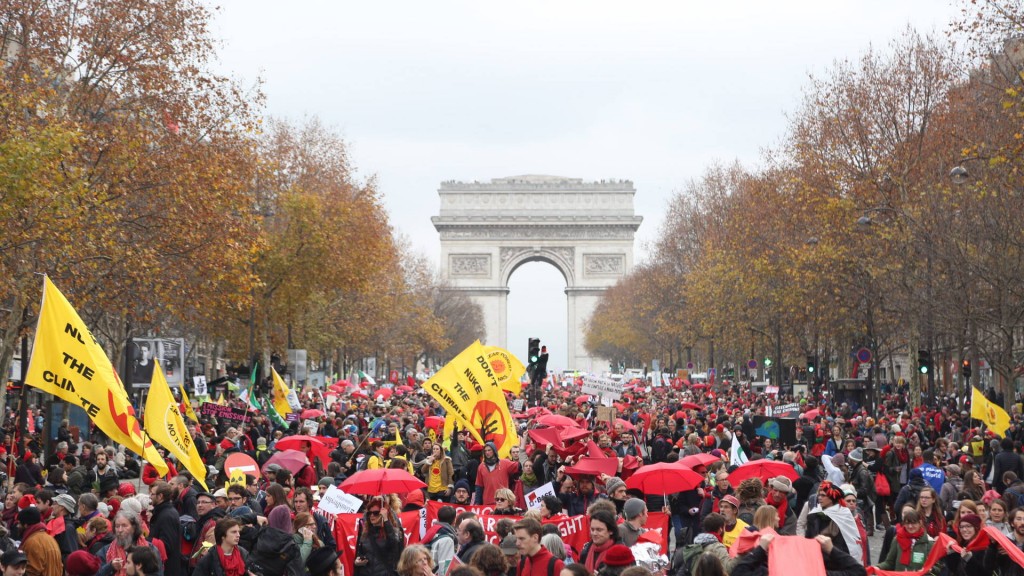
Public Hearing
6:30 pm Thursday
January 21st
616 Six Flags Drive Arlington
When polluters cut smog pollution, they cut a lot of other kinds of pollution as well, including climate-damaging gases like CO2 and methane.
Hundreds of thousands of tons of this kind of pollution could be eliminated in the next air plan for Dallas-Ft. Worth as a result of requiring modern controls on coal plants, cement kilns, and oil and gas sources.
Luminant's Martin Lake coal plant in East Texas is the largest global warming polluter in the country. It released 16.3 million metric tons of carbon dioxide in 2012, the equivalent of 3.5 million cars.
Recent studies show facilities in the Barnett Shale Gas Play are leaking 50% to 90% more methane than the government estimates.
We need to cut pollution here, now.
That's why if you care about climate change, you'll want to show-up next Thursday night and speak in favor of the EPA rejecting a State of Texas plan that doesn't require any new cuts in pollution from any source.
Join your earth-hugging peers in calling for a new air plan written by EPA that includes cuts in local smog pollution that can also benefit the entire planet. In as little as two years, you could make a big difference to a big problem.
Think Globally. Act Locally.
Not just a bumper sticker.
Additional Talking Points here if you need them.
SPECIFICS?
When the Ash Grove cement plant in Midlothian modernized its operations to conform with new anti-smog rules and other regulations, it cut approximately 300,000 tons of CO2 pollution – a year. That's just one cement plant.
Methane is the main ingredient in natural gas, and a highly potent greenhouse gas, with over 80 times the 20-year warming power of carbon dioxide.
EPA estimates 750,000 to one million tons of methane is released by equipment leaks every year from facilities in the Barnett Shale, but a recent peer-reviewed study estimated methane emissions in the Barnett Shale may be twice as high as EPA thinks.
There are pending EPA rules to limit methane pollution at natural gas sites that could be rolled into this DFW air plan. Even a 50% cut in leaks in North Texas would mean an annual drop of 400-500,000 tons of climate changing pollution.
A good anti-smog plan from EPA will also put more pressure on the obsolete East Texas coal plants to close.These coal plants are the biggest reasons Texas status is the #1 Greenhouse Gas polluter in the U.S.
The fastest way to cut lots of greenhouse gases in the Belly of the Beast is with a good EPA anti-smog plan for DFW.
Come speak in support of an air plan for our region that would help reduce asthma attacks here, and the melting of glaciers in Greenland.
Thursday, January 21st
6:30 pm
616 Six Flags Road in Arlington
First Floor Meeting Room
– Send EPA Administrators an email asking them to reject the State's do nothing DFW air plan and instead wrie one of their own.
– Sign the CHANGE.ORG Petition urging EPA to reject the State's air plan for DFW
Expect Obama’s New CO2 Plan to Close Those Nasty East Texas Coal Plants? Don’t.
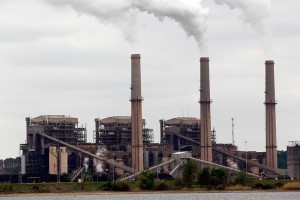 By this point, most of you will have been inundated with opinions and factoids about what President Obama's new "Clean Power Plan" will and won't do about climate change. Bottom Line: while it sets a precedent and an emissions floor for the largest sources of CO2, it does so in a way which turns out to be not so challenging for most states – including Kentucky deep in Coal County.
By this point, most of you will have been inundated with opinions and factoids about what President Obama's new "Clean Power Plan" will and won't do about climate change. Bottom Line: while it sets a precedent and an emissions floor for the largest sources of CO2, it does so in a way which turns out to be not so challenging for most states – including Kentucky deep in Coal County.
That's also true for Texas, where besides being Ground Zero for the fracking boom, we also have plenty of wind power and some solar. According to the EPA, the state must cut an annual average of 51 million tons of carbon to reach its target, a reduction of about 21 percent from 2012 emissions. We're well on our way to achieving most of that reduction with current or planned wind, gas, hydro, and solar. (In what might be a first concession that natural gas shouldn't be a long-term "bridge fuel," some analysts think tweaks performed by EPA prior to the Plan's release give more incentives to adopt real renewables earlier rather than leaning on gas in the interim.)
This is mostly good news. We want the wind and solar economies to grow. The trade-off is that, under Obama's Clean Power Plan, the rise of these technologies and their emissions reductions lets the obsolete East Texas coal plants off the hook because you don't need them to close to meet your CO2-cutting goals.
Five of those obsolete coal-fired power plants surround DFW's eastern side in a half circle (Big Brown, Martin Lake, Monticello, Limestone, and Welsh). They are, without a doubt, the worst examples of fossil fuel-generated pollution in Texas. They're huge emitters of Mercury, Particulate Matter (PM), Sulfur Dioxide (SOx), and Nitrogen Oxides (NOx).
These five East Texas coal plants are projected by the state to still be releasing 150 tons a day of smog-forming NOx pollution in 2018. Because of wind direction and volume, that pollution has a very large impact on DFW air quality – probably more than any other single phenomenon. We need those coal plants to either modernize or close ASAP to help solve our chronic smog problem. But from the initial survey of the policy, the Clean Power Plan is not going to force that outcome.
While the Plan probably signals the end of any new coal plants any time soon, or at least none without CO2 solutions like sequestration or capture, the fate of existing coal plants, especially in a state like Texas, is more ambiguous. More likely, they'll continue to linger on, beneficiaries of friendly state-created policies designed to nullify the requirements of the Clean Air Act, like loosening their PM limits by magnitudes.
Now, you might think that a federal goal that's been mostly accomplished without doing anything new would be a no brainer in Austin, but there are increasingly fewer and fewer brains in Austin. Because the state's environmental agencies are now completely ideologically driven, common sense just isn't a factor anymore. Instead of asking "how can we best solve this problem?" the response is now to deny there's a problem at all and go about ginning up anti-federal hyperbole to better position yourself in the Republican Primary.
Consequently, the Texas Commission on Environmental Quality is seriously considering not turning in a required state plan of how to get the reductions needed by the deadline of 2030. If the state doesn't submit one of its own, then the EPA would write one for them. This has the business community in Texas a little nervous, since they have a lot more influence here than in DC. But citizens, which kind of anti-climate change plan would you rather have Texas abide by – one written by a state agency that denies climate change is happening and is doing everything it can to obstruct policies to prevent it, or one written by a federal agency that's actually acknowledging the obvious and doing something about it?
Regardless of whose plan does what by when, the East Texas coal plants look to be able to ride this federal policy out thanks to an almost two-decade homegrown drive to open up the state to renewables. If we want these coal plants to stop causing problems for us, we're probably going to have to find other leverage points.
One of these leverage points is demanding the state of Texas follow the law and require the coal plants install modern Selective Catalytic Reduction controls as part of the new DFW clean air plan it submitted to EPA this summer for approval. SCR could reduce smog pollution from these plants by 90%. So far, Texas has refused to even acknowledge the need to do so. EPA has requested the state change its mind – without success.
If it wants to, EPA can reject the state's plan for not including these new controls on the coal plants. But we have to encourage them to do so – by petition, and by e-mail.
Consider the five East Texas coal plants the energy sector equivalent of the obsolete "wet" kilns in Midlothian that burned hazardous waste for 20 years. They're technological dinosaurs, on their last legs, but still churning out tons and tons of harmful air pollution as they plod their way to the bone yard. The Clean Power Plan insures they'll be the last of their kind, but it's not a silver bullet.
Ready to Fight Back and Win? Downwinders is about to launch its most ambitious campaign in years

Mercifully, the 2015 Texas Legislative Session is almost over. Since January we've seen cities stripped of their traditional zoning power over oil and gas facilities, citizens' ability to challenge new pollution permits further suppressed, and renewable energy sources singled-out for financial punishment.
But the circus leaves town on June 1, and shortly after that Downwinders at Risk will be gearing up for the largest clean air campaign we've taken on since our fight against hazardous waste burning in the Midlothian cement kilns.
It'll begin with the mid-summer release of the results of a years-in-the-making project that turns the tables on the recent trend to transfer all pollution decisions from local governments to Austin. For the first time, city and county officials in North Texas will have the power to do what, up until now, only state agencies could do.
We don't want to give away too much too soon, but this is by far the single most costly project we've ever sought funding for, and it will have an impact on every major industrial source of pollution affecting Dallas-Fort Worth air quality – the cement kilns, the oil and gas industry and the obsolete East and Central Texas coal plants. And It's being done in a way that makes its results unimpeachable by a hostile state government and industry.
As a kind of sneak peak, below is a small sample of what we're talking about. It's a map of our half of Texas with the DFW metropolitan area outlined in black near the top. It shows the reach and intensity of smog pollution from the five coal plants closest to us. Even though they're 90 to over 100 miles away, they're still able to raise smog levels in central DFW by 4 to 8 parts per billion or more – a huge amount that could make or break our compliance with the Clean Air Act.
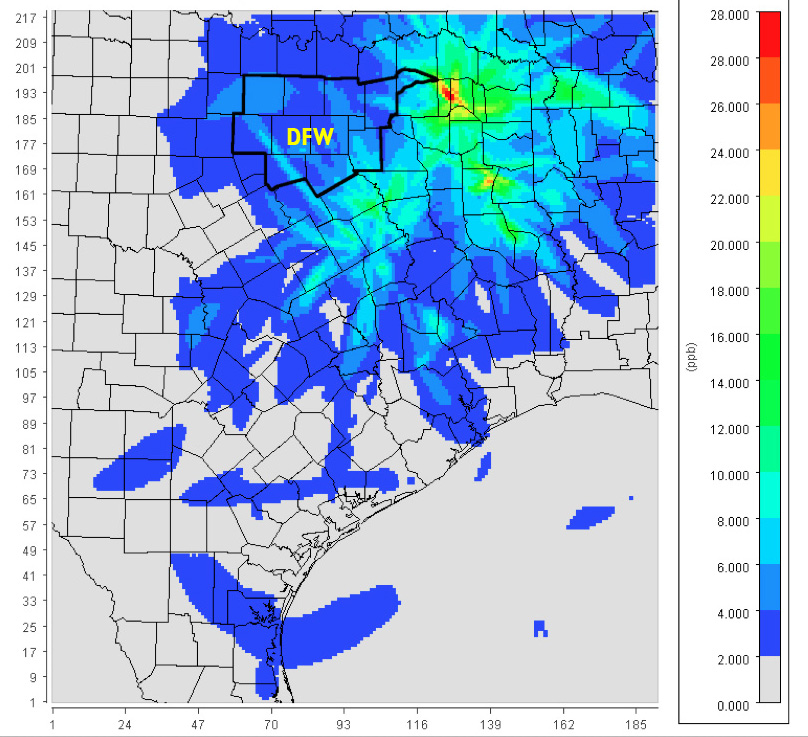 This is a map the Texas Commission on Environmental Quality has the ability to produce, but refuses to. Now, we have the same ability. And we can aim it at any large industrial source of pollution in the region. And we have.
This is a map the Texas Commission on Environmental Quality has the ability to produce, but refuses to. Now, we have the same ability. And we can aim it at any large industrial source of pollution in the region. And we have.
Moreover, the results of our study are being released in tandem with an associated project by Dr. Robert Haley and the University of Texas – Southwestern Medial Center. Together, they'll represent the opening salvos to a sustained, multi-organizational campaign to address DFW's chronic bad air problems.
Armed with this new evidence and having identified some chinks in the armor of the Status Quo, we see a chance to strike a powerful blow for cleaner air and citizen power. We see a chance to win a significant victory. We don't know about you, but after the last five months, we could sure use some victories.
That's not to say winning will come easy. It's still Texas. But we hope you'll agree that one of they keys to our long track record of success is picking the battles and the battlefields that give us better odds.
Every dollar you give goes to fight
for cleaner air right here in N. Texas
Both Gas Industry Spinmeister and Mansfield Compressor Spew During Thursday’s EPA Hearing
 There was at least one truth uttered by Steve Everley, the professional PR spokesperson for Energy in Depth, itself the PR arm of the Gas Industry, during his testimony at last Thursday's EPA ozone standard hearing in Arlington:
There was at least one truth uttered by Steve Everley, the professional PR spokesperson for Energy in Depth, itself the PR arm of the Gas Industry, during his testimony at last Thursday's EPA ozone standard hearing in Arlington:
"…natural gas producers will be significantly impacted by EPA’s proposal to reduce the National Ambient Air Quality Standard for ozone from 75 parts per billion to between 65 and 70 ppb."
Indeed. At the rate things are going in Austin and DC, it might be the only thing to impact the industry's large emissions of pollution for many years to come. Left unsaid by Everley was why the industry would be impacted by such a lower ozone standard – because in many parts of the country now, including the DFW area, smog-forming pollution from the gas industry is contributing significantly to higher ozone levels.
Even the governmental affairs branch of the gas industry, otherwise known as the Texas Commission on Environmental Quality, admits that facilities like compressors, storage tanks, pipelines, and de-hydrators found by the thousands in the western part of the Metromess contribute more smog-forming Volatile Organic Compounds (VOCs) than all the "on-road" vehicles in North Texas combined. This is true not only at the present time, but will be true at least three years into the future, according to TCEQ's own estimates.
Gas facilities also account for the third largest source of smog-forming Nitrogen Oxide pollution in DFW, according to TCEQ numbers included in their recent air plan submitted to EPA – only a ton per day less than all "non-road" vehicles in North Texas like construction equipment, and well ahead of "point sources" like the Midlothian cement kilns and local power plants.
In all, TCEQ predicts that 35,335 tons per year of smog-forming pollution will still be coming from the region's gas industry in 2018. That's a lot. It's so much that, as the TCEQ also demonstrates with its computer modeling, even a tweak here and there in gas pollution estimates can make big differences in the levels of ozone at monitors in places like Denton and Keller and Eagle Mountain Lake – traditionally the worst-performing air quality monitors in North Texas.
And that's why a lower ozone standard is a threat to the industry. The very air quality monitors the industry affects most with its pollution are the ones driving the region's high smog levels. Lowering the ozone standard means it would have to spend money to reduce those emissions significantly. It means it would have to spend money to prevent the kind of huge "accidental" releases of smog-forming pollution released by the Mansfield compressor on Thursday even while Steve Everley was testifying to EPA.
After giving her own testimony to EPA on Thursday morning, Earthworks' Sharon Wilson and Mansfield Gas Well Awareness board member Lance Irwin headed out to the Summit Midstream Partners Compressor Station behind Mansfield's Performing Arts Center, with an infrared, or FLIR "thermal imaging" camera. Such a device is capable of recording the kinds of VOC emissions that are often smelled and inhaled by surrounding residents, but can't be seen with the naked eye.
The Summit compressor and the two nearby Eagleridge gas wells have been the scene of many different complaints from the surrounding Mansfield neighborhood – everything from airborne foam landing in backyards to oily deposits landing on car finishes. On Thursday, Wilson and Irwin were responding to a new series of complaints about awful smells. When they showed up, what the two recorded was a massive "emergency blowdown" (versus the "planned" kind). While filming the event, Wilson suffered health effects familiar to gas facility neighbors and was overwhelmed by the obvious hydrocarbon fumes. Once you see her video, you understand why:
Such a blowdown was exactly what Lance Irwin had warned the Mansfield City Council about only three days before, during comments directed at slowing down or denying the permit for a new compressor, 34 wells, 12 tanks and a assortment of other facilities at an Edge pad site near Debbie Lane in town. He pointed out that industry and government estimates about emissions never take these kind of catastrophic events into account – form a short-term toxic exposure perspective, or as it turns out, from an air quality, smog-creating perspective. And he's right.
In this regard, these kinds of accidents are no different than the infamous industrial "burps" from refineries and chemical plants along the Houston Ship Channel that lead to smog spikes downwind. There are 650 large compressor stations in the DFW "non-attainment" area. How many are experiencing blowdowns on any given day? How many are affecting ozone levels in the spring and summer? The TCEQ estimates included in its DFW air plan don't even try to quanify them.
Because gas facilities like compressors are subject only to "standard permits," are located diffusely around a region, and don't officially emit a de minimus amount of air pollution, they're not subject to the federal rule of off-setting. That's when a new polluting facility locates in an already smoggy area like DFW and has to pay to cut smog pollution elsewhere if it wants to emit the stuff itself. If a new cement plant or power plant were to locate in DFW, it would have to pay to reduce a ton and a half of smog-forming pollution for every ton it wanted to release. Gas facilities don't have to do this – even though collectively they emit more smog-forming pollution than all the cement plants and power plant in the non-attainment area!
EPA has tried to argue that a company's different facilities are all tied together and should be counted as a single source, and so subject to off-setting regulations. But the courts have ruled against them.
Rising gas industry pollution and the absence of any official brake on its growth like off-setting is a large reason, maybe the primary reason, why DFW hasn't seen the kind of air quality progress it should have by now. Until this last summer's cooler and wetter weather gave us relief, ozone levels had been stagnating or even rising since 2009 – or about the time the industry invaded North Texas in large numbers. There's no question that had the Barnett Shale boom not happened, we'd have much cleaner air by now.
But it did and we don't. And so that's why a lower ozone standard is perhaps the only way that the gas industry will ever be forced to clean-up its act – especially on the widespread regional level we require to get to safe and legal air. Just like it has with the Midlothian cement plants, the need for lower smog levels can force the state's and industry's to act to add controls. It's a long-term fight, but one of the only paths to across-the-board change versus the city-by-city slog activists have had to rely on.
National Resources Defense Council lawyer John Walke has a great takedown of Steve Everley's spin on Thursday. And the tireless cross-country DeSmogblog reporter and photographer Julie Dermansky has a good read on the Mansfield fight that you should check out. But the most compelling rebuttal to both industry PR and local governments who want to ignore their own responsibility in this mess is probably Wilson and Irwin's two and a half minutes of video.
Energiewende: What Germany’s Green Energy Revolution Means for U.S.
 Many of you are probably headed to the Sierra Club's Earth Wind and Fire energy get together this coming weekend in Addison. As a kind of primer on how greener, cleaner energy could flourish in the US and what it would mean to the way we produce, distribute, regulate and charge for power, you might want to check out this New York Times piece from earlier in the month on how Germany is turning the corner.
Many of you are probably headed to the Sierra Club's Earth Wind and Fire energy get together this coming weekend in Addison. As a kind of primer on how greener, cleaner energy could flourish in the US and what it would mean to the way we produce, distribute, regulate and charge for power, you might want to check out this New York Times piece from earlier in the month on how Germany is turning the corner.
Deutschland is close to getting 30% of its energy needs from renewable sources, by far the leader among heavily industrialized nations – America is currently achieving about half that. That's impressive, but by far the most interesting parts of the story is what kind of ripples in the marketplace a commitment to green power can produce once a government decides to make that commitment.
For example, it's in large part due to German demand for solar that the prices of Chinese solar panels have plummeted, making the choice cheaper for everyone else around the planet. Likewise, more off shore wind power is being built to correspond to the daylight hours when it's needed most by consumers and those prices are also coming down thanks to German leadership.
Especially noteworthy is the anxiousness of utility companies who see their old business plan of large, centralized power systems evaporating with the rise of so many smaller, decentralized options. As the article states:
"A reckoning is at hand, and nowhere is that clearer than in Germany. Even as the country sets records nearly every month for renewable power production, the changes have devastated its utility companies, whose profits from power generation have collapsed.
Some experts say the electricity business is entering a period of turmoil beyond anything in its 130-year history, a disruption potentially as great as those that have remade the airlines, the music industry and the telephone business."
Among the strategies in play are "energy retainers" – regular payments to persuade utilities to keep some fossil-fuel power plants on standby for times when renewable sources lag. That's a complete upside down pyramid approach from previous years that saw those same older plants used as "base load" facilities with renewables supplementing them when necessary.
And while the sources of power are changing as a result of this energy revolution, so are the ways people use it. In Texas' deregulated electricity market, you're already seeing different pricing for different times of day so that consumers take better advantage of non-peak hours. Appliances like dishwashers and water heaters with "smart chips" in them could automatically take advantage of these differences and level out demand.
Check out the NYT piece and then, for a more radical American perspective on the German energy revolution and how it can be translated into action on this side of the Atlantic by the guy that invented the term "negawatts" read Amory Lovins' take. Lovins has been at the forefront of alternative energy since before the term was created and what were once thought to be fanciful flights of imagination on his part by the utility companies are the reality they're now having to deal with.

